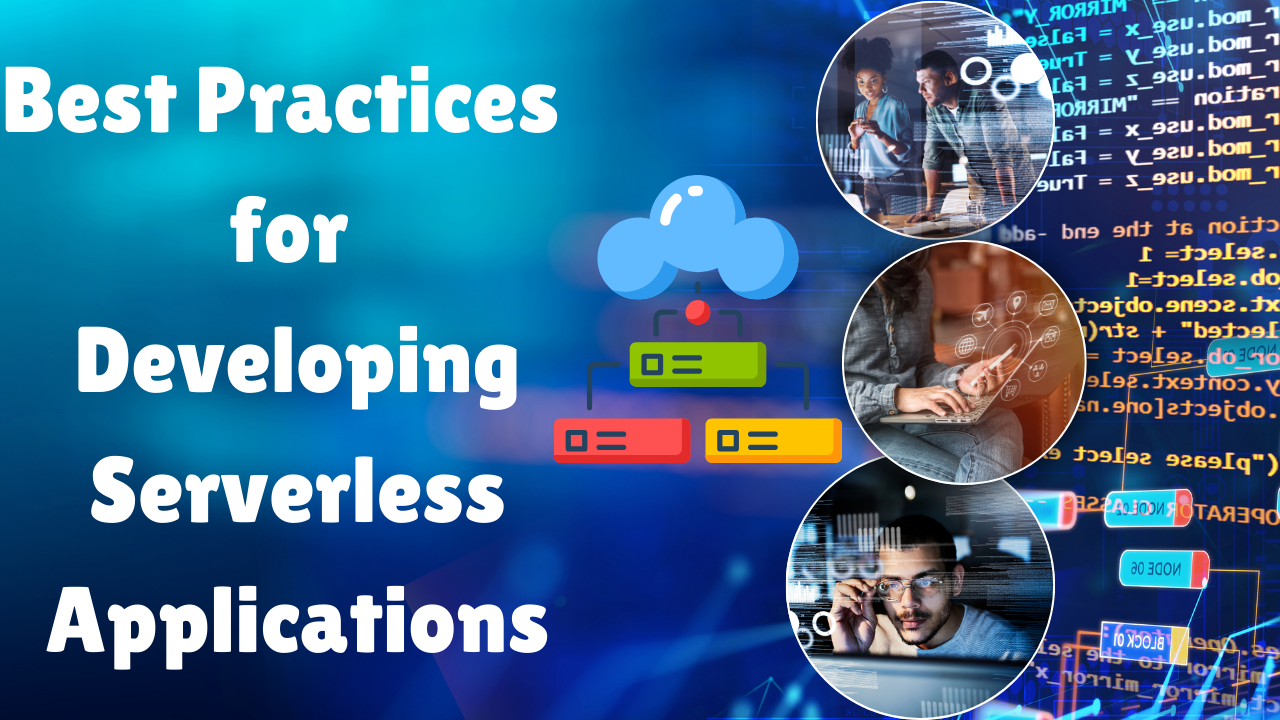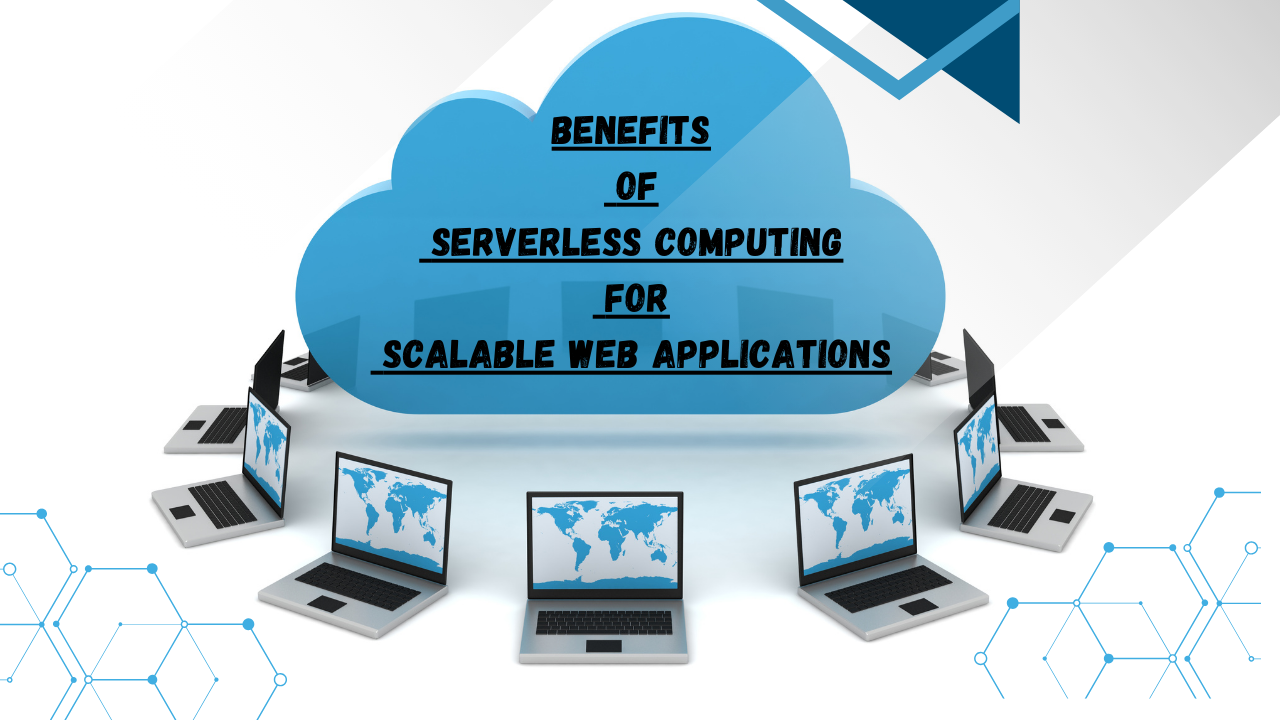In recent years, serverless computing has emerged as a transformative approach to building and deploying applications. This paradigm shifts the traditional notions of server management and architecture, enabling developers to focus on writing code rather than managing infrastructure. This article delves into the benefits of serverless computing, particularly in the context of scalable web applications.
What is Serverless Computing?
Before exploring the benefits, it’s essential to understand what serverless computing entails. Contrary to its name, serverless computing does not eliminate servers; rather, it abstracts the server management layer. In this model, cloud providers automatically handle the server infrastructure, allowing developers to deploy code in response to events without worrying about provisioning, scaling, or maintaining servers.
Popular serverless platforms include AWS Lambda, Google Cloud Functions, and Azure Functions. These platforms allow developers to run backend code in response to HTTP requests, database changes, or other events, charging only for the compute time consumed.
Key Benefits of Serverless Computing for Scalable Web Applications
Cost Efficiency
One of the most significant advantages of serverless computing is cost savings. In traditional hosting models, businesses pay for reserved server capacity regardless of usage. In contrast, serverless architectures charge based on actual usage—essentially a pay-as-you-go model.
For web applications with fluctuating traffic patterns, such as e-commerce sites during holiday seasons or news platforms during major events, this cost model can lead to substantial savings. Organizations no longer need to over-provision resources to handle peak loads, thereby minimizing waste and optimizing expenses.
Automatic Scaling
Serverless computing automatically scales applications in response to incoming traffic. This feature is especially beneficial for web applications experiencing variable workloads.
When traffic surges, serverless platforms can instantly allocate more resources to handle the increased demand, ensuring that performance remains consistent. Conversely, during low-traffic periods, the platform reduces resources automatically, optimizing costs. This elasticity allows businesses to focus on user experience without worrying about infrastructure limitations.
Reduced Time to Market
The serverless model accelerates the development process. Developers can concentrate on writing code for specific functions without the need to set up servers or manage infrastructure.
This increased productivity enables teams to iterate quickly, release features faster, and adapt to market changes. With built-in services such as databases, authentication, and file storage offered by cloud providers, developers can leverage existing tools to expedite application development.
Enhanced Focus on Core Business Logic
By abstracting away server management, serverless computing allows developers to focus on the core business logic of their applications. This focus leads to higher-quality code and better user experiences.
For instance, instead of spending time configuring servers, teams can concentrate on optimizing application features, enhancing user interfaces, and implementing robust security measures. This focus can drive innovation and result in more competitive web applications.
Improved Reliability and Availability
Most serverless platforms come with built-in redundancy and failover mechanisms. Cloud providers manage the underlying infrastructure, ensuring high availability and fault tolerance.
This aspect is critical for scalable web applications that require constant uptime. With serverless architectures, businesses can achieve greater reliability, as the infrastructure is managed by experts who can quickly address any potential issues.
Seamless Integration with Other Services
Serverless computing platforms often provide seamless integration with various third-party services and APIs. This capability enables developers to enhance their applications with additional functionalities without significant overhead.
For instance, a web application can easily integrate with payment gateways, third-party authentication services, or cloud-based storage solutions. This flexibility allows for the rapid enhancement of features, leading to a more robust user experience.
Event-Driven Architecture
Serverless applications are inherently event-driven, responding to events such as user actions, data changes, or scheduled tasks. This design simplifies the architecture of web applications, making them more responsive and agile.
Event-driven architectures can lead to improved performance, as functions are triggered only when necessary. For instance, an e-commerce platform can execute payment processing only when a purchase is made, optimizing resource usage and enhancing the overall user experience.
Security Enhancements
Security is a top concern for web applications, and serverless computing can offer enhanced security features. Cloud providers typically implement robust security measures, including automated patching, encryption, and compliance with various standards.
Furthermore, since developers do not manage the underlying infrastructure, they can rely on the cloud provider’s security protocols. However, developers need to ensure secure coding practices and manage access control within their functions.
Global Reach
Serverless architectures often come with global distribution capabilities. Cloud providers have data centers across various regions, allowing applications to run closer to users. This proximity reduces latency and improves the overall performance of web applications.
For businesses looking to expand their reach, serverless computing facilitates the deployment of applications in multiple regions without the complexity of managing multiple servers.
Simplified Maintenance
With serverless computing, maintenance is significantly simplified. The cloud provider manages updates, security patches, and scaling issues, allowing developers to focus on writing and improving code.
This ease of maintenance is particularly beneficial for small teams or startups with limited resources, as they can allocate their time and budget toward developing features rather than managing infrastructure.
Rapid Experimentation and Prototyping
The serverless model is ideal for rapid experimentation and prototyping. Developers can quickly deploy new features or test ideas without significant upfront investments in infrastructure.
This agility fosters a culture of innovation, allowing teams to experiment with new concepts and iterate based on user feedback. For scalable web applications, this ability to adapt and evolve is crucial in staying competitive.
Reduced Vendor Lock-In Risks
While concerns about vendor lock-in exist in cloud computing, many serverless architectures support open standards and can be designed to minimize dependencies on specific providers. By using open-source tools and frameworks, developers can create serverless applications that are portable across different cloud environments.
This flexibility allows organizations to adapt their infrastructure to changing business needs or preferences without being tied to a single vendor.
Challenges to Consider
Despite the numerous benefits, serverless computing is not without its challenges. Some potential downsides include:
Cold Start Latency: When functions are not invoked for a period, they may experience latency upon the first invocation, known as cold start latency. This can impact performance for applications with infrequent usage.
Limited Execution Time: Serverless functions often have execution time limits, which may not be suitable for long-running tasks.
Complex Debugging: The distributed nature of serverless architectures can complicate debugging and monitoring, requiring developers to implement robust logging and tracing mechanisms.
Resource Limits: Different serverless platforms impose resource limits on memory and execution time, which may restrict certain applications.
Use Cases for Serverless Computing
Serverless computing is particularly well-suited for a variety of use cases that require scalability and flexibility. One prominent example is real-time data processing. Applications that handle streams of data—such as IoT sensors or live analytics dashboards—can benefit significantly from serverless architectures. By triggering functions in response to events, developers can process data as it arrives, ensuring timely insights without worrying about infrastructure scaling.
Another compelling use case is backend APIs for mobile applications. Mobile apps often experience fluctuating traffic as users engage at different times of the day. With serverless computing, developers can create APIs that scale automatically, delivering the necessary resources to handle peak usage without incurring costs during idle periods. This responsiveness enhances user experience and allows for seamless interaction with backend services.
Performance Optimization Strategies
While serverless computing offers many benefits, performance optimization remains a key consideration. Cold starts—the latency experienced when a function is invoked for the first time after being idle—can affect user experience. To mitigate this, developers can implement strategies such as warming up functions by periodically invoking them during low-traffic periods. Additionally, optimizing the size of the deployment package can lead to faster execution times, as smaller packages can load more quickly.
Another approach is to use provisioned concurrency offered by some serverless platforms, which keeps a specified number of instances warm and ready to handle requests. This ensures that applications can maintain responsiveness even during sudden traffic spikes, providing a better user experience.
Monitoring and Debugging in Serverless Environments
Effective monitoring and debugging are critical in any application development environment, and serverless architectures pose unique challenges in this area. Traditional monitoring tools may not be adequate due to the event-driven and distributed nature of serverless applications. Developers should consider using specialized monitoring solutions designed for serverless environments, which provide insights into function performance, execution times, and error rates.
Integrating logging and tracing capabilities can also enhance observability. Tools like AWS CloudWatch or third-party services like Datadog can help track function invocations and diagnose issues. Implementing structured logging allows developers to capture relevant context, making it easier to troubleshoot and optimize performance.
Future Trends in Serverless Computing
As serverless computing continues to evolve, several trends are shaping its future. Multi-cloud strategies are becoming increasingly popular, allowing organizations to leverage the strengths of multiple cloud providers while minimizing the risk of vendor lock-in. This trend can enhance resilience and provide more options for developers.
Additionally, the rise of function-as-a-service (FaaS) platforms is democratizing access to serverless computing, enabling even smaller teams and startups to build and scale applications without heavy upfront investments. The ongoing development of tools and frameworks aimed at simplifying serverless deployment and management will further accelerate adoption.
Lastly, as businesses become more data-driven, the integration of machine learning and serverless computing is expected to grow. Serverless architectures can facilitate the deployment of machine learning models that respond to events, allowing organizations to leverage AI capabilities in real time without the complexities of managing dedicated infrastructure.
Best Practices for Developing Serverless Applications
To maximize the benefits of serverless computing, developers should adhere to best practices. Modular architecture is key; breaking applications into small, manageable functions enhances maintainability and scalability. This modular approach allows teams to update or replace individual functions without affecting the entire application.
Implementing security best practices is equally important. Developers should adhere to the principle of least privilege, ensuring that each function only has the permissions necessary to perform its tasks. Additionally, employing techniques such as input validation and data sanitization can help mitigate security risks.
Finally, cost management should be a priority. Monitoring usage and optimizing function execution can help control costs, ensuring that applications remain efficient and budget-friendly. By staying informed about the nuances of the serverless model, organizations can fully leverage its potential while minimizing challenges.
Conclusion
Serverless computing represents a significant shift in how web applications are built and deployed. With its cost efficiency, automatic scaling, and focus on core business logic, serverless architectures are particularly well-suited for scalable web applications.
As businesses continue to embrace digital transformation, the advantages of serverless computing—such as improved reliability, rapid development cycles, and enhanced integration capabilities—will likely drive more organizations to adopt this innovative approach.
By understanding the benefits and potential challenges of serverless computing, organizations can make informed decisions about their application architecture and position themselves for success in an increasingly competitive landscape. Whether you are a startup looking to innovate quickly or an established business aiming to optimize costs and performance, serverless computing offers a compelling solution for modern web application development.
FAQs
What is serverless computing?
Serverless computing is a cloud computing model where the cloud provider manages the infrastructure, allowing developers to run code in response to events without having to provision or manage servers.
How does serverless computing help with scalability?
Serverless architectures automatically scale applications based on demand, allocating resources as needed to handle traffic spikes and reducing resources during low traffic, ensuring consistent performance.
What are the cost benefits of serverless computing?
Serverless computing operates on a pay-as-you-go model, charging only for the compute time consumed. This can significantly reduce costs compared to traditional models where businesses pay for reserved server capacity.
Are there any downsides to serverless computing?
Yes, some challenges include cold start latency, execution time limits for functions, complex debugging, and potential resource restrictions imposed by cloud providers.
Can serverless computing improve application reliability?
Absolutely! Most serverless platforms provide built-in redundancy and failover mechanisms, enhancing reliability and ensuring high availability for web applications.
